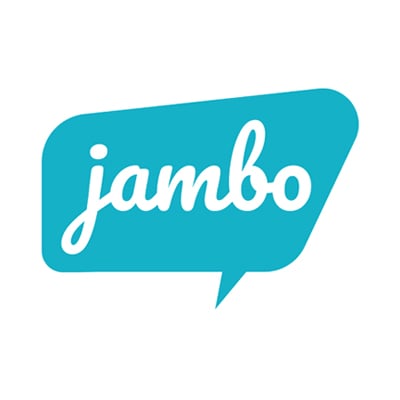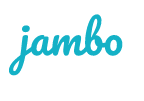
In this blog, we share some of the top stakeholder management tools and explain where they may be helpful in the stakeholder engagement journey.
What is a stakeholder management tool?
A stakeholder management tool is anything that helps you manage stakeholders effectively. It can be a physical thing, a framework, a document, or software.
The best stakeholder management tools for the planning stage
- Stakeholder mapping
- Free publicly available resources
The best stakeholder management tools for the in-person facilitation stage
- Sticky notes
- Easels and paper pads
The best stakeholder management tools for the virtual facilitation stage
- Webinar registration pages
- Interactive webinar features
- Participative presentation platforms
The best stakeholder management tools for the follow-up stage
- Emails
- Survey platforms
- Stakeholder Relationship Management (SRM) software
Best stakeholder management tools to use during stakeholder engagement planning
#1: Stakeholder mapping
Performing a stakeholder mapping exercise using a stakeholder map template during the stakeholder engagement planning stage will help you better understand your stakeholders. After this exercise, you will appreciate the volume of stakeholders you will engage with and to what extent. It also lets you plan the resource requirements, budget, and tactics you will use to engage.
#2: Publicly available resources
Subject matter experts and industry organizations regularly share great stakeholder management resources online for free. For example, reports, whitepapers, and blogs are available to view and download online. Search for and use these resources to broaden your thinking and learn new and exciting ways to engage your stakeholders. IAP2 has many resources for stakeholder engagement professionals.
At Jambo, we've partnered with leading stakeholder engagement experts to create helpful blogs with tips and advice. You can check out some of these blogs below:
- Ask The Expert: 7 Tips for Planning Your Next Online Stakeholder Engagement Event
- Ask The Expert: Advice for Managing Stakeholder Issues
- Ask the Expert: Top 5 Tips for Diffusing Conflict During Online Stakeholder Engagement
- Ask the Expert: Indigenous Inclusion Strategies: Where to Start?
- Ask the Expert: What's the Importance of Multi-Channel, Layered Stakeholder Engagement?
Top stakeholder management tools to use during stakeholder engagement in-person facilitation
#3: Sticky notes
If you're hosting in-person engagement sessions, a helpful tool to use is simple sticky notes. Pick up different colour pads and leave a stack on each table, or give them directly to individuals at the start of the session. During presentations or discussions, ask your attendees to write their questions, comments, and considerations on the sticky notes. Collect the sticky notes intermittently or at a designated time during the engagement session. Make sure to display the sticky notes or plan an exercise to respond to the sticky notes during the session.
Tip: Some people may not be comfortable sharing their sticky notes with the group, so allow people to hold onto their notes. However, they should still be collected after the session to capture all the information.
This inexpensive tool can help engage people during the session and make them feel heard when their notes are addressed. Going through the sticky notes after the session can help your team identify common questions or concerns about the engagement. Be sure to capture this vital information in your stakeholder relationship management system.
#4 Easels and paper pads
Designate a team member as a notetaker on an easel with a paper pad. They can either jot down interesting points discussed during the session or take the questions and comments from the sticky notes and write them out in bullet form for everyone to view and respond to. Using this process helps your attendees feel heard and validated, and you'll easily be able to see the trending questions or comments.
Top stakeholder management tools to use during a virtual facilitation
#5: Webinar registration pages
Webinar registration pages are great for letting you know who is coming to your event, but did you know you can also use this tool to ask more questions, like "How did you hear about this event?" or "How do you feel about this event?" This additional information can help you better understand your project, the sentiment toward it, and who is talking about it.
#6: Interactive webinar features
By now, everyone has a webinar software of choice (Zoom, GoToWebinar, WebEx, etc.). Explore the full range of interactive features available within the webinar software and plan to use them fully during virtual engagement sessions. Most webinar software has features like polls and whiteboards.
The whiteboard feature is a great way to take notes and visually illustrate the discussions. You can also make the whiteboard collaborative so attendees can join in to add their feedback. These tools are also helpful for prioritization exercises; you can post options on the screen, and participants can identify their preference using a sticker or a simple checkmark. At the end of the session, depending on your webinar software, you can download the whiteboard as a PDF to use in your meeting notes or for your report back to attendees. If you can't do this, consider grabbing a screenshot.
#7: Participative presentation platforms
Some great participative presentation platforms are available to help make presentations more interesting while keeping your stakeholders interested. Check out Mentimeter, Prezi, SlideDog, and Genially.
These participative presentation platforms differ slightly, but most offer similar features like polls, questions, word clouds, and real-time voting to help gather data while keeping attendees engaged. These features are great for icebreakers or during a presentation wrap-up. Afterwards, you can download the data from the meeting notes or share it with attendees in your report. Sharing these resources is a great way to show you were listening.
Best stakeholder management tools to use during stakeholder engagement follow-up
#8: Emails
It sounds straightforward, but emails are a tool you can use in the stakeholder engagement follow-up stage. Create an email template that you can send attendees after an engagement session to thank them for participating and ask if they want to be kept up to date, included in future sessions, or given feedback options. Asking stakeholders these simple questions shows you respect their opinions and their time.
#9: Survey platforms
After a stakeholder engagement session, you can send out a survey to attendees. You can explore survey software, which includes SurveyMonkey, SoGOSurvey, SurveyPlanet, etc. Also, for virtual events, some webinar software offers built-in survey features that you can schedule to be sent automatically after the webinar ends.
These surveys can help you do several things:
- Evaluate the overall session
- Gain insight into what worked or what didn't, or which tools attendees liked/disliked
- Address the things you didn't get to during the session
- Provide an opportunity for open feedback that might not have been possible during the session
- Ask key questions to help better understand your stakeholders
#10: Stakeholder Relationship Management (SRM) software
During every stage of the stakeholder engagement journey, it's important to log all stakeholder information and engagement session data captured in one accessible location. Wherever you save your data, it must be secure (as you often will deal with sensitive or confidential information). Data also needs to be searchable so that the whole team can easily view it, as you can learn a lot about your stakeholders from reviewing this data. Stakeholder Relationship Management (SRM) software like Jambo was explicitly built for logging, tracking, and reporting on stakeholder information and engagement activities.
Building relationships and trust with your stakeholders is always on your mind. An essential element is following through on commitments (accommodations or promises). We know things can get busy, and sometimes commitments can get lost, especially if only one person (like the session facilitator) knows about them. To make sure a commitment is never forgotten, it should be documented. The Jambo commitments module allows you to log a commitment and track its status. Teams can monitor commitments together to ensure everyone is addressed.
Tip: CRM (Customer Relationship Management) and SRM software are different. A CRM is a tool for managing customers and sales, while an SRM is for managing stakeholder information and relationships.
How stakeholder management tools can improve stakeholder engagement and build better stakeholder relationships
While more stakeholder management tools are available outside this list, the above will give you a great starting place. Software tools help you gather data and insights your team can use to be more intentional about your engagement strategies. However, regardless of the tools you use, it's essential to listen to your stakeholders and follow up with them to show they've been heard and build long-term relationships with them.
If you've read this blog and want to learn more about Jambostakeholder relationship management (SRM) software, check out this video.









